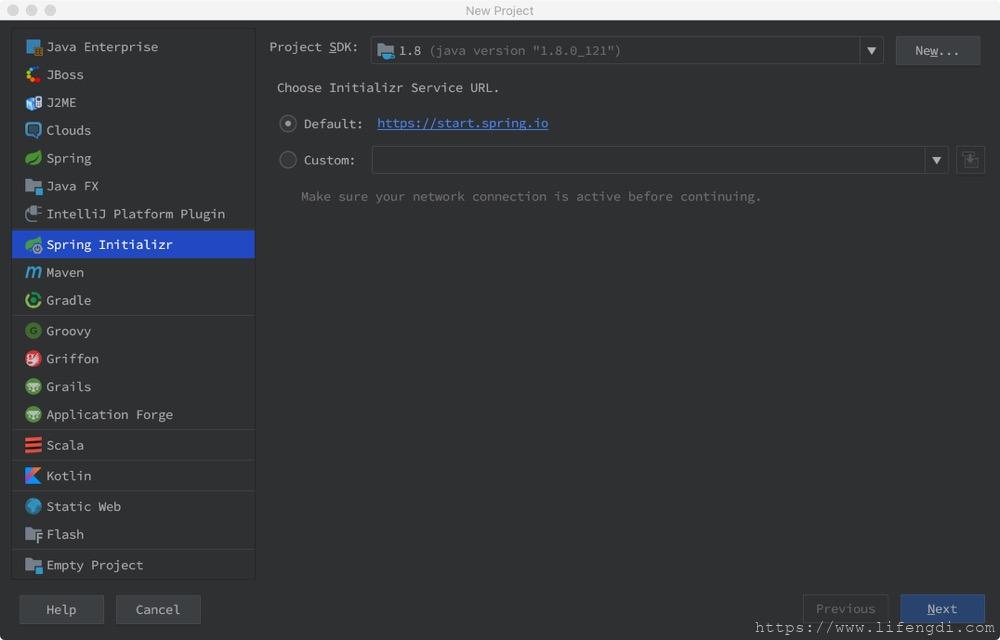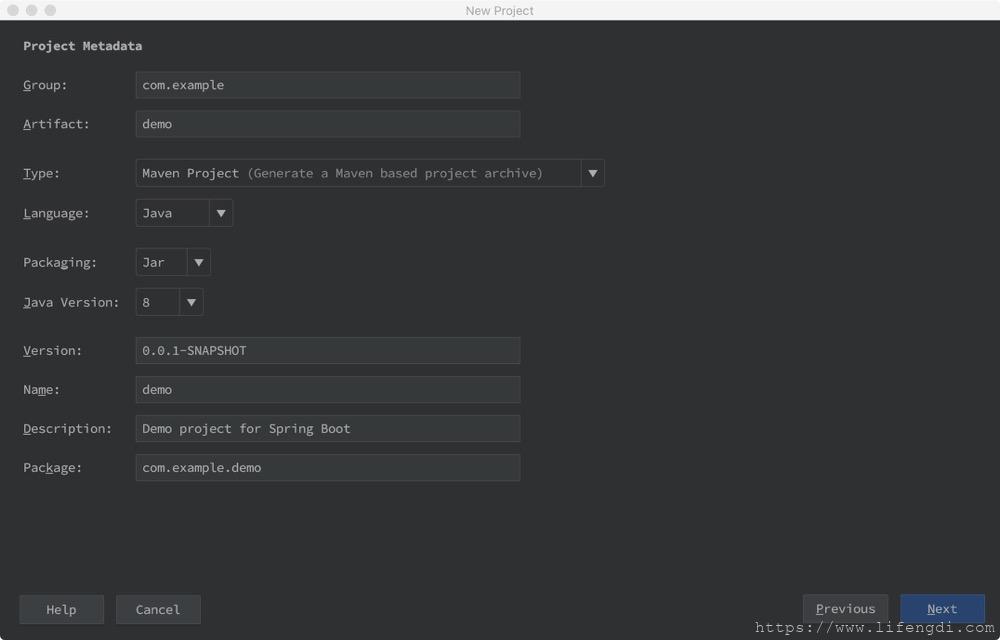SpringBoot整合Elasticsearch详细步骤以及代码示例(附源码)
准备工作#
环境准备#
JAVA版本
java version "1.8.0_121"
Java(TM) SE Runtime Environment (build 1.8.0_121-b13)
Java HotSpot(TM) 64-Bit Server VM (build 25.121-b13, mixed mode)ES版本
{
"name": "pYaFJhZ",
"cluster_name": "my-cluster",
"cluster_uuid": "oC28y-cNQduGItC7qq5W8w",
"version": {
"number": "6.8.2",
"build_flavor": "oss",
"build_type": "tar",
"build_hash": "b506955",
"build_date": "2019-07-24T15:24:41.545295Z",
"build_snapshot": false,
"lucene_version": "7.7.0",
"minimum_wire_compatibility_version": "5.6.0",
"minimum_index_compatibility_version": "5.0.0"
},
"tagline": "You Know, for Search"
}SpringBoot版本
2.1.7.RELEASE开发工具使用的是IDEA
安装ES#
Elasticsearch介绍以及安装:ElasticSearch入门-基本概念介绍以及安装
开始#
创建SpringBoot项目#
搞定收工。至此,一个新的SpringBoot项目就新鲜出炉了。
POM文件#
当然,具体依赖的jar包肯定不止第2步选择的那些,其中SpringBoot提供的操作ES的jar包spring-boot-starter-data-elasticsearch当然也是必不可少的。
这里贴出最终的pom文件:
<?xml version="1.0" encoding="UTF-8"?>
<project xmlns="http://maven.apache.org/POM/4.0.0" xmlns:xsi="http://www.w3.org/2001/XMLSchema-instance"
xsi:schemaLocation="http://maven.apache.org/POM/4.0.0 https://maven.apache.org/xsd/maven-4.0.0.xsd">
<modelVersion>4.0.0</modelVersion>
<parent>
<groupId>org.springframework.boot</groupId>
<artifactId>spring-boot-starter-parent</artifactId>
<version>2.1.7.RELEASE</version>
<relativePath/> <!-- lookup parent from repository -->
</parent>
<groupId>com.lifengdi</groupId>
<artifactId>search</artifactId>
<version>0.0.1-SNAPSHOT</version>
<name>search</name>
<description>elasticsearch</description>
<properties>
<java.version>1.8</java.version>
<testng.version>6.14.2</testng.version>
<spring-cloud-dependencies.version>Greenwich.RELEASE</spring-cloud-dependencies.version>
<kibana-logging-spring-boot-starter.version>1.2.4</kibana-logging-spring-boot-starter.version>
<fastjson.version>1.2.47</fastjson.version>
<alarm-spring-boot-starter.version>1.0.15-SNAPSHOT</alarm-spring-boot-starter.version>
</properties>
<dependencyManagement>
<dependencies>
<dependency>
<groupId>org.springframework.cloud</groupId>
<artifactId>spring-cloud-dependencies</artifactId>
<version>${spring-cloud-dependencies.version}</version>
<type>pom</type>
<scope>import</scope>
</dependency>
</dependencies>
</dependencyManagement>
<dependencies>
<dependency>
<groupId>org.springframework.boot</groupId>
<artifactId>spring-boot-starter-web</artifactId>
</dependency>
<!--elasticsearch-->
<dependency>
<groupId>org.springframework.boot</groupId>
<artifactId>spring-boot-starter-data-elasticsearch</artifactId>
</dependency>
<dependency>
<groupId>org.springframework.boot</groupId>
<artifactId>spring-boot-configuration-processor</artifactId>
<optional>true</optional>
</dependency>
<!--lombok-->
<dependency>
<groupId>org.projectlombok</groupId>
<artifactId>lombok</artifactId>
<optional>true</optional>
</dependency>
<!--测试-->
<dependency>
<groupId>org.springframework.boot</groupId>
<artifactId>spring-boot-starter-test</artifactId>
<scope>test</scope>
</dependency>
<dependency>
<groupId>org.testng</groupId>
<artifactId>testng</artifactId>
<version>${testng.version}</version>
<scope>test</scope>
</dependency>
<!-- 日期处理 -->
<dependency>
<groupId>joda-time</groupId>
<artifactId>joda-time</artifactId>
</dependency>
<!--FastJson-->
<dependency>
<groupId>com.alibaba</groupId>
<artifactId>fastjson</artifactId>
<version>${fastjson.version}</version>
</dependency>

